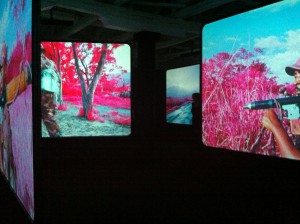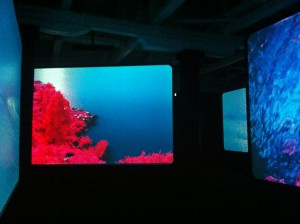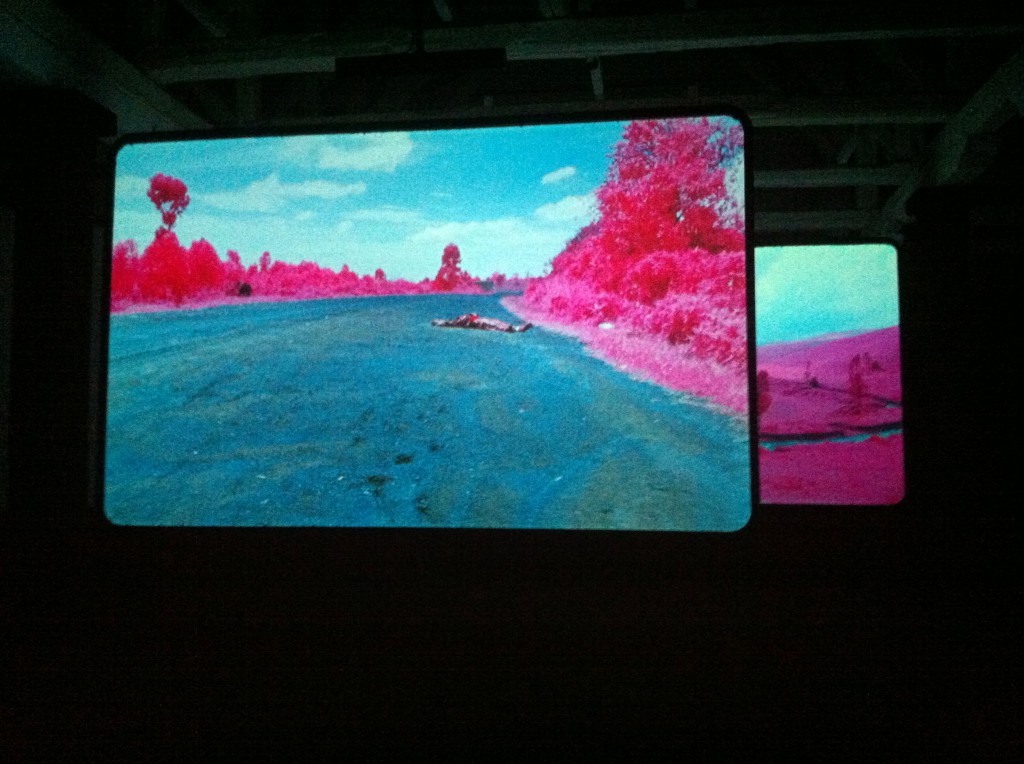I’ve been back from Venice for nearly a month now and I’m still processing all that I saw and experienced. Looking at my map, I visited over 80 exhibitions at the Biennale. For the purpose of this blog, I have written a small review of The Pavilion of Ireland, which presented Richard Mosse: The Enclave. I have chosen this exhibition, because I remember nervously answering the interview question of ‘What else are you looking forward to seeing in Venice?’, with Richard Mosse’s name.
The Pavilion of Ireland / Richard Mosse: The Enclave
With the collaboration of cinematographer Trevor Tweeten and composer Ben Frost
The Enclave is a multi-channel film, which unfolds across six screens in a darkened gallery space of the Fondaco Marcello. On entering the space, you are subsumed by the darkness; the sounds and score of the film; the psychedelic colour palette and a disorientation as to where to situate yourself. As you move around the space, you are led by the work’s emphasis of sound and vision; your gaze drifting between screens as you watch Mosse’s exploration of the conflicted landscape of the Democratic Republic of Congo. The Enclave was shot entirely on discontinued 16mm infrared film, which, originally designed for military reconnaissance, renders the jungle war zone in psychedelic hues of magenta, lavender and crimson.
It is perhaps obvious to say that the colours seem false; constructed, and yet this disjuncture between the beauty of the film and the humanitarian tragedy it portrays, is deeply disconcerting. Green, the defining colour of the landscape and of the militarily uniform, is here replaced with magenta and in challenging the expected conventions of war photography, you can forget, for a moment, that the twisted bodies lining the roadside are real. The floating, forever roaming, view of the camera and the performative nature of the Congolese rebels, also add to this eerie sense of ambiguity. And yet, this reality, however mediated, does not allow for indifference.
At one point in the film, all channels across the six screens turn black, transporting the gallery into complete darkness as the sounds of bomb blasts overwhelm you. I shared this particularly uncomfortable moment with one other viewer; caught within a suddenly claustrophobic square created by four screens. In the darkness and without the film to place the sounds, your imagination struggles to make sense of what has happened. The sound, created by composer Ben Frost, is comprised entirely of field recordings from the Congo and it underscores the complex relationship between beauty and horror in The Enclave.
Richard Mosse describes himself as an artist who works within the places that journalists also find themselves. Using a film that registers a spectrum of light, which is invisible to the naked eye, The Enclave explores an unseen and forgotten conflict that has killed 5.4million people. The camera appears to remain deliberately non-didactic as it weaves through this non-narrative work, yet it punctures our sensibilities and weighs heavily upon the us as we leave.


